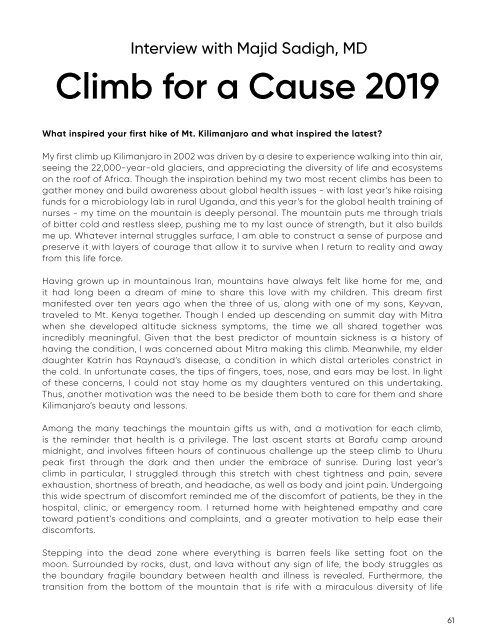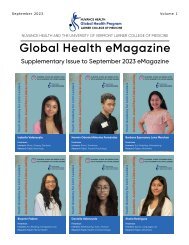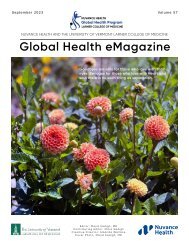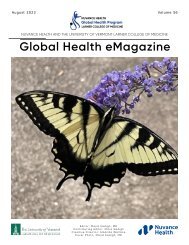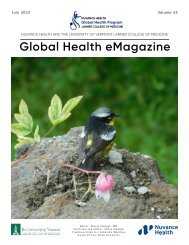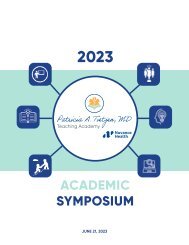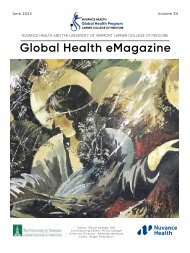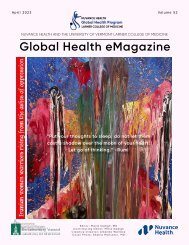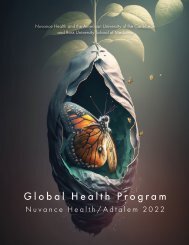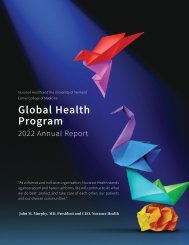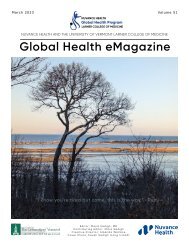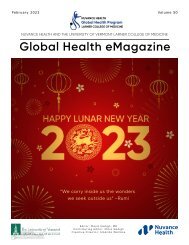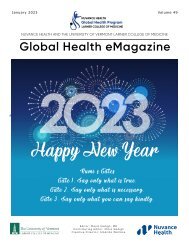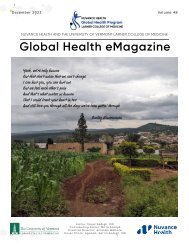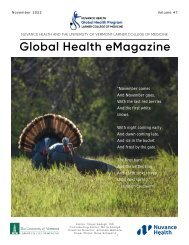climbforacause2019_rev
Create successful ePaper yourself
Turn your PDF publications into a flip-book with our unique Google optimized e-Paper software.
Interview with Majid Sadigh, MD<br />
Climb for a Cause 2019<br />
What inspired your first hike of Mt. Kilimanjaro and what inspired the latest?<br />
My first climb up Kilimanjaro in 2002 was driven by a desire to experience walking into thin air,<br />
seeing the 22,000-year-old glaciers, and appreciating the diversity of life and ecosystems<br />
on the roof of Africa. Though the inspiration behind my two most recent climbs has been to<br />
gather money and build awareness about global health issues - with last year’s hike raising<br />
funds for a microbiology lab in rural Uganda, and this year’s for the global health training of<br />
nurses - my time on the mountain is deeply personal. The mountain puts me through trials<br />
of bitter cold and restless sleep, pushing me to my last ounce of strength, but it also builds<br />
me up. Whatever internal struggles surface, I am able to construct a sense of purpose and<br />
preserve it with layers of courage that allow it to survive when I return to reality and away<br />
from this life force.<br />
Having grown up in mountainous Iran, mountains have always felt like home for me, and<br />
it had long been a dream of mine to share this love with my children. This dream first<br />
manifested over ten years ago when the three of us, along with one of my sons, Keyvan,<br />
traveled to Mt. Kenya together. Though I ended up descending on summit day with Mitra<br />
when she developed altitude sickness symptoms, the time we all shared together was<br />
incredibly meaningful. Given that the best predictor of mountain sickness is a history of<br />
having the condition, I was concerned about Mitra making this climb. Meanwhile, my elder<br />
daughter Katrin has Raynaud’s disease, a condition in which distal arterioles constrict in<br />
the cold. In unfortunate cases, the tips of fingers, toes, nose, and ears may be lost. In light<br />
of these concerns, I could not stay home as my daughters ventured on this undertaking.<br />
Thus, another motivation was the need to be beside them both to care for them and share<br />
Kilimanjaro’s beauty and lessons.<br />
Among the many teachings the mountain gifts us with, and a motivation for each climb,<br />
is the reminder that health is a privilege. The last ascent starts at Barafu camp around<br />
midnight, and involves fifteen hours of continuous challenge up the steep climb to Uhuru<br />
peak first through the dark and then under the embrace of sunrise. During last year’s<br />
climb in particular, I struggled through this stretch with chest tightness and pain, severe<br />
exhaustion, shortness of breath, and headache, as well as body and joint pain. Undergoing<br />
this wide spectrum of discomfort reminded me of the discomfort of patients, be they in the<br />
hospital, clinic, or emergency room. I returned home with heightened empathy and care<br />
toward patient’s conditions and complaints, and a greater motivation to help ease their<br />
discomforts.<br />
Stepping into the dead zone where everything is barren feels like setting foot on the<br />
moon. Surrounded by rocks, dust, and lava without any sign of life, the body struggles as<br />
the boundary fragile boundary between health and illness is <strong>rev</strong>ealed. Furthermore, the<br />
transition from the bottom of the mountain that is rife with a miraculous diversity of life<br />
61


